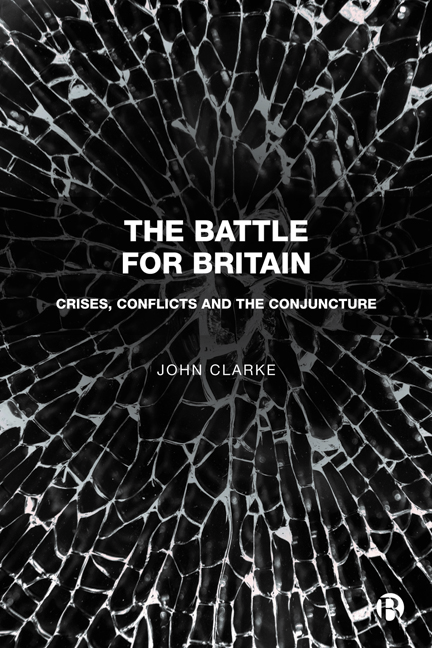2 - Turbulent Times: The Making of the Present
Published online by Cambridge University Press: 18 January 2024
Summary
As I argued in the previous chapter, conjunctural analysis is a spatio-temporal approach, exploring the particular configurations of time and place that make up a conjuncture. Somewhat artificially, I focused on the spatial dynamics and dimensions in the last chapter. Here I turn to the challenge of thinking about time. We can catch a glimpse of its complexity by considering the different stories that have been told about Brexit and the Battle for Britain. These narratives operate with different senses of time: some tell us about long histories (of decline or a fall from greatness); others offer fast-paced accounts of quickly moving events (stories of political calculation and manoeuvring). More rarely are these different senses of time brought together – as multiple temporalities (different orderings and experiences of time) that co-exist and interact. Felski, for example, has argued that time
is a concept of enormous complexity, including questions of measurement, rhythm, synchronization, sequence, tempo and intensity. It spans the personal and the public, work and leisure, the instantaneous and the eternal, intimate relations and global structures, everyday life and conditions of extremity. It exists at many different levels and is experienced in radically divergent ways. (2000: 16– 17)
Just as Chapter 1 argued that the space of the conjuncture is no simple matter (demanding thinking the nation transnationally), so this chapter will explore the multiple orderings and senses of time that are in play in the conjuncture. Thinking about temporalities, rather than time/times, is a way of trying to treat time as enmeshed in social, political-cultural and economic relations and processes and conflicts. Indeed, I will suggest, it is the intersections and entanglements of these different temporalities – the ways that they come to be condensed in the present – that gives the conjuncture its distinctive character. As a result, this chapter is organised around the notion of different temporalities. It will explore the different orderings of time that are associated with particular fields of relationships which have distinctive dynamics of crisis, contestations and (temporary) resolutions. These temporalities are, however, not entirely separate: each provides some of the conditions for the others and is affected in turn by their dynamics.
- Type
- Chapter
- Information
- The Battle for BritainCrises, Conflicts and the Conjuncture, pp. 32 - 50Publisher: Bristol University PressPrint publication year: 2023

